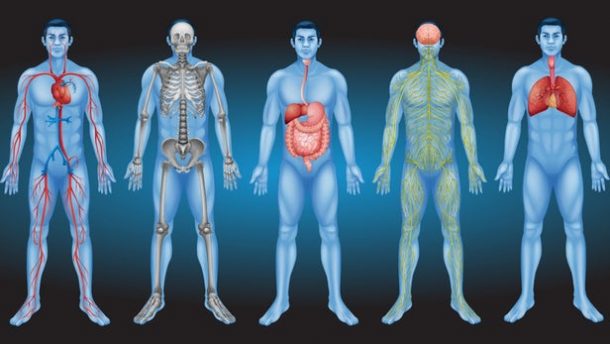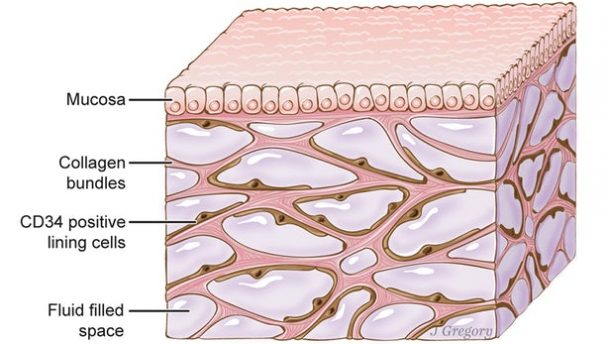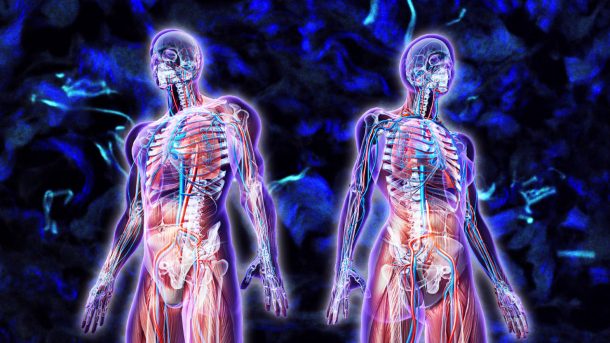Just when we think, we know everything there is to know about the human body, we are proved wrong. The use of a new microscopic technique led a team of scientists to identify a previously unknown human anatomical feature. There are calling it the interstitium. It was previously thought to be simply dense connective tissue sitting below the skin’s surface and surrounding the organs but it is actually a complex series of interconnected, fluid-filled compartments.
While examining a patient’s bile duct with a new type of endoscope that uses laser and fluorescent dyes to examine the living tissue, researchers identified a pattern of cavities that didn’t fit with the known anatomy of the bile duct. They took their results to pathology expert Neil Theise and the team proceeded to take bile duct biopsies in a way that did not dehydrate the samples.

Theise explained to ResearchGate, “Rather than process the sampled bile duct tissue as usual, with dehydration and chemical fixation to make slides, we quickly froze the tissue, keeping the resected piece as close to the normal living tissue as possible.”
The previously assumed dense connective tissue was actually revealed to be a network of tiny fluid-filled cavities supported by a lattice meshwork of proteins. It could never be identified before as prior microscopic analysis involved some degree of cellular dehydration.

“We would often see little “cracks” between collagen bundles in these layers,” says Theise. “I was taught, and in turn taught many of my trainees, that these cracks were artifacts of processing. We had pulled the tissue too hard in preparing the slide and separations had formed. But these were not artifacts: these were the remnants of the collapsed spaces. They had been there all the time. But it was only when we could look at living tissue that we could see that.”
Once identified, it was seen across the entire human body from the linings of organs to the surrounding muscles. The aspect of the research that has gained the most traction is the suggestion that the interstitium should be classified as a new organ. Theise says that it fulfills the criteria for the definition of a new organ and could be the 80th organ to be classified in the human body.
“The definition of ‘organ’ is imprecise, but usually implies that there is a unity and uniqueness of structure or of function,” says Theise. “This space has both: unique properties and structures not seen elsewhere and functions that are highly specific and dependent on the unique structures and cell types that form it.”

Everyone is not convinced that it is enough to be classified as a new organ and even though they agree that this is a huge scientific discovery and will help in understanding the human body better, they feel that it is not enough to be classified as a new organ.
“I would think of this as a new component that is common among a variety of organs, rather than a new organ in and of itself,” says Nathanson in an interview with CNN. “It would be analogous to discovering blood vessels for the first time, in that they are in every organ but they aren’t an organ themselves.”
The coming months will give us a better idea of what this discovery signifies.


